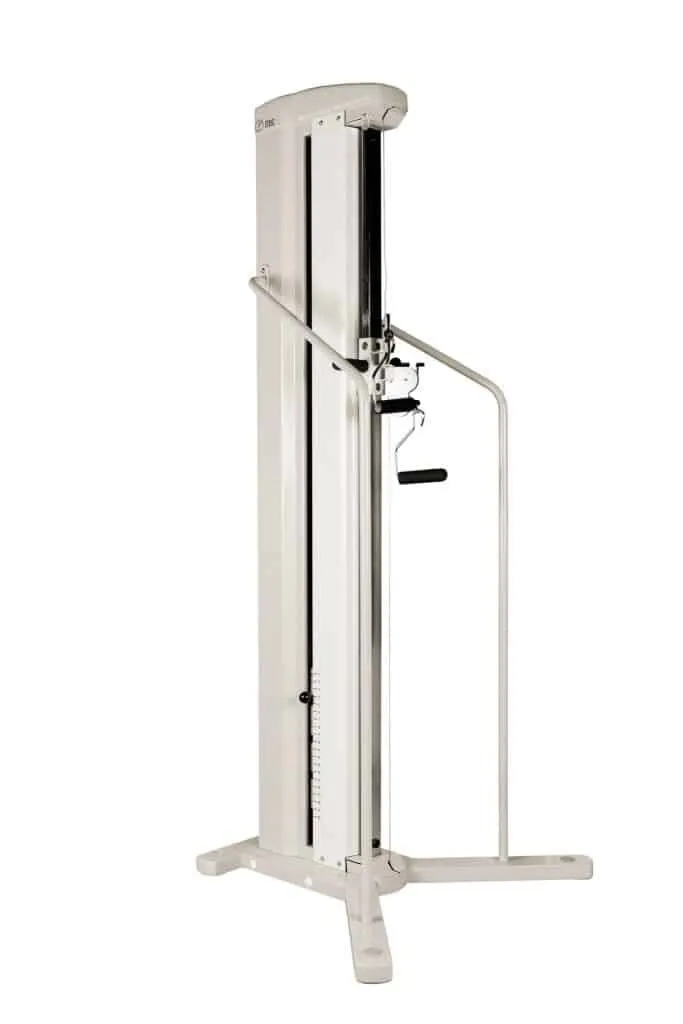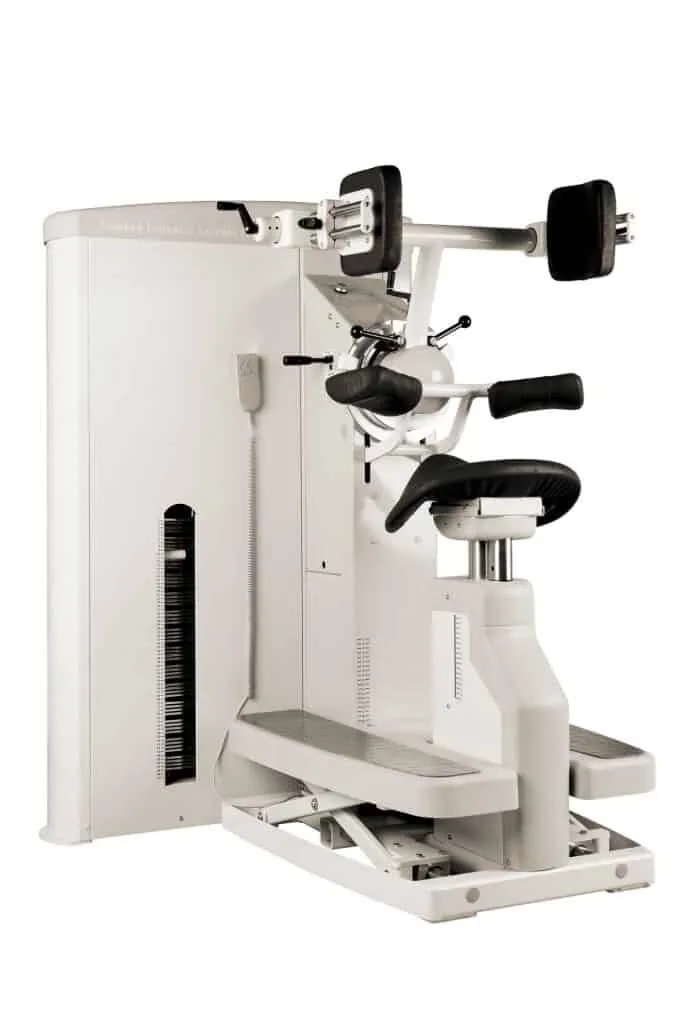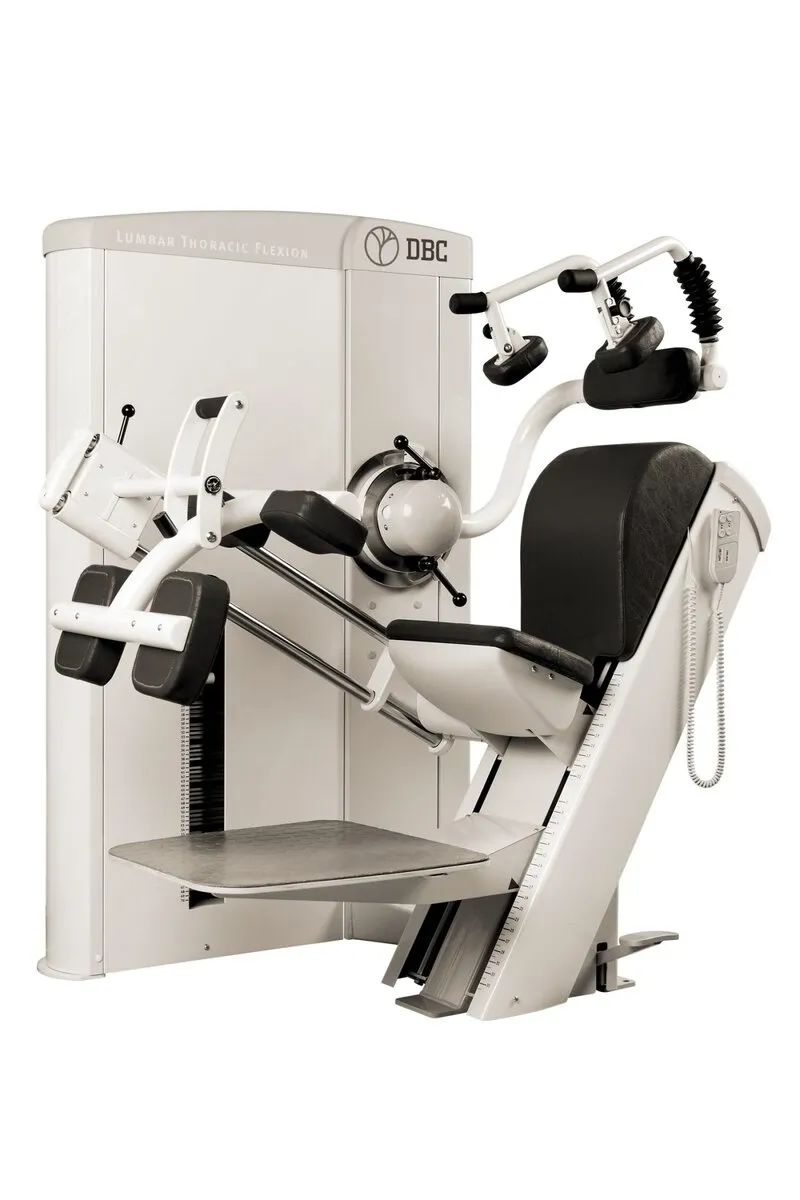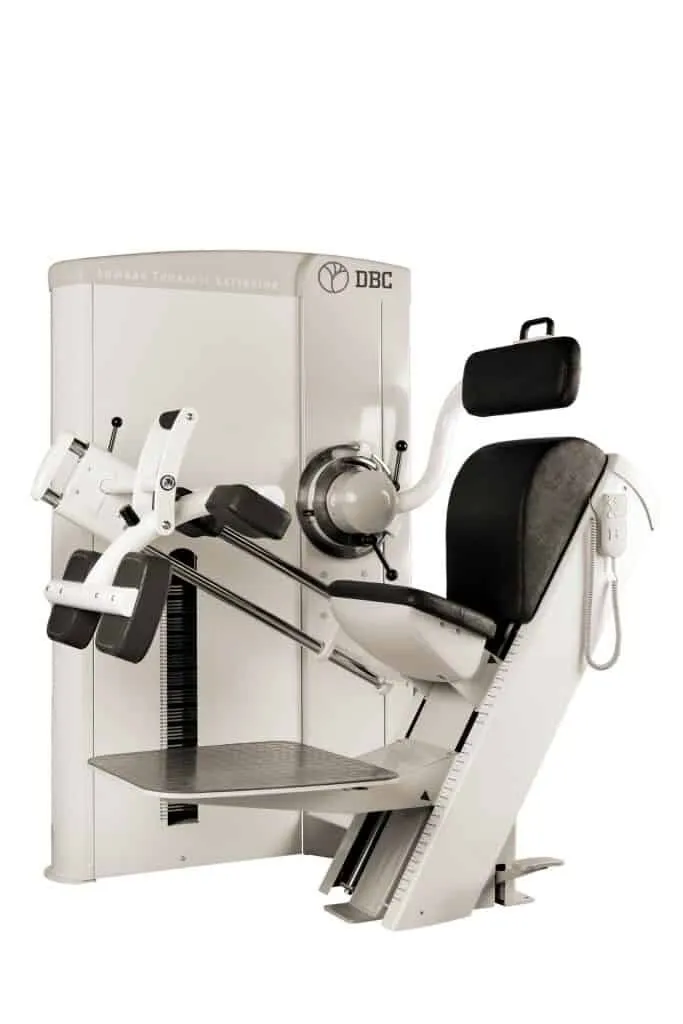Professional Equipment
The DBC treatment concept is applied in the treatment and rehabilitation of back, neck and shoulder conditions that often involve severe pain at all DBC Clinics worldwide.
MLU
The MLU is a cable devices with a range of training opportunities. With the possible variety of exercises, this device is easily applied, but not limited to, exercises for the back, neck, shoulder or knee. With the proper education and a little bit of imagination the MLU devices is unlimited in its application possibilities.
LTR
The rotational movement performed while training with the LTR provides rotational movement of the lower body around a vertical axis. While keeping the shoulders in a fixed position the movement of the lower body helps to provide a larger range of movement that incorporates rotational movement through the lumbar and lower thoracic region and into higher thoracic spinal segments. The goal of this movement is to encourage active, coordinated and controlled rotational movement through the lower back and higher into the thoracic spine.
SBA
The training movement in the SBA is a multi-joint movement encouraging specific movement in the upper back area. The movement activates the scapular muscles moving the scapula inwards while pulling back the shoulder position. The goal of the device is to specifically address the inner scapula muscles, which are frequently inhibited from functioning in cervical and shoulder disorders.
Leg Press
This leg press has been designed for a wide range of training possibilities, combining the opportunity to train for both the knee and hip areas against resistance. The adjustable seat and double foot plate allow for a large variety of training options at all training levels from rehabilitation to elite athletics.
LTL
The training movement performed in the LTL is a lateral, or side bending, flexion movement. The hip lock system helps to encourage a specific lateral bending exercise resulting in a transverse mobilization and joint movement in the lumbar-thoracic spine. The activation of this movement requires the activation and support from the body’s core muscles to ensure a controlled and well coordinated movement. The goal of this lateral flexion movement is to strengthen the primary muscles for this movement pattern providing both support and increased movement to the lumbar and thoracic spine.
LTF
The training movement in the LTF consists of an upper body forward flexion exercise. The Hip Lock System is designed to immobilize the hip and pelvic region, ensuring that the large muscle groups in the legs, the hamstrings, glutes and hip flexors, cannot influence the specified trunk flexion/extension training movement. The goal of this isolated flexion movement is to achieve segmental, vertebrae by vertebrae, motion through the lumbar and lower thoracic spine that can be targeted according the individual needs.
LTE
The training movement in the LTE consists of a segmental back extension motion that can be targeted to a specific region according to the individual needs. The DBC Hip Lock System is designed to immobilize the hip and pelvic region, ensuring that the large muscle groups in the legs, the hamstrings and gluteals, cannot influence the specified back extension training movement. The goal of this isolated extension movement is to achieve a vertebrae by vertebrae motion through the lumbar and lower thoracic spine
GHR
The GHR device provides a specific and focused rotational movement for the shoulder joint. By providing a stable platform in which to produce this movement the training becomes very specific to the muscles providing the rotational movement instead of allowing the larger muscles groups to dominate the movement. The goal of the GHR is to provide very specific exercises focused at activating and strengthening the “rotator cuff” muscles of the shoulder.
CEE
The CEE device guides the neck extensional motion in a bio-mechanically correct elliptical movement pattern, allowing the desired coupled motion that is seen in ideal cervical spinal movement. The immobilization system assists in keeping the body in place and allowing only the specific cervical extension muscles to perform the desired movement. The goal of CEE training is to achieve a segmental cervical extension movement that results from the elliptical training motion.
C3R
The C3R device guides cervical rotation in a biomechanically correct manner, combining the flexion and lateral flexion into the three dimensional multi-joint motion. The immobilization system assists in keeping the body in place and allowing only the specific cervical rotator muscles to perform the desired movement. The goal of the C3R training movement is to help restore the normal coupled motion of the cervical spine during cervical rotation.









